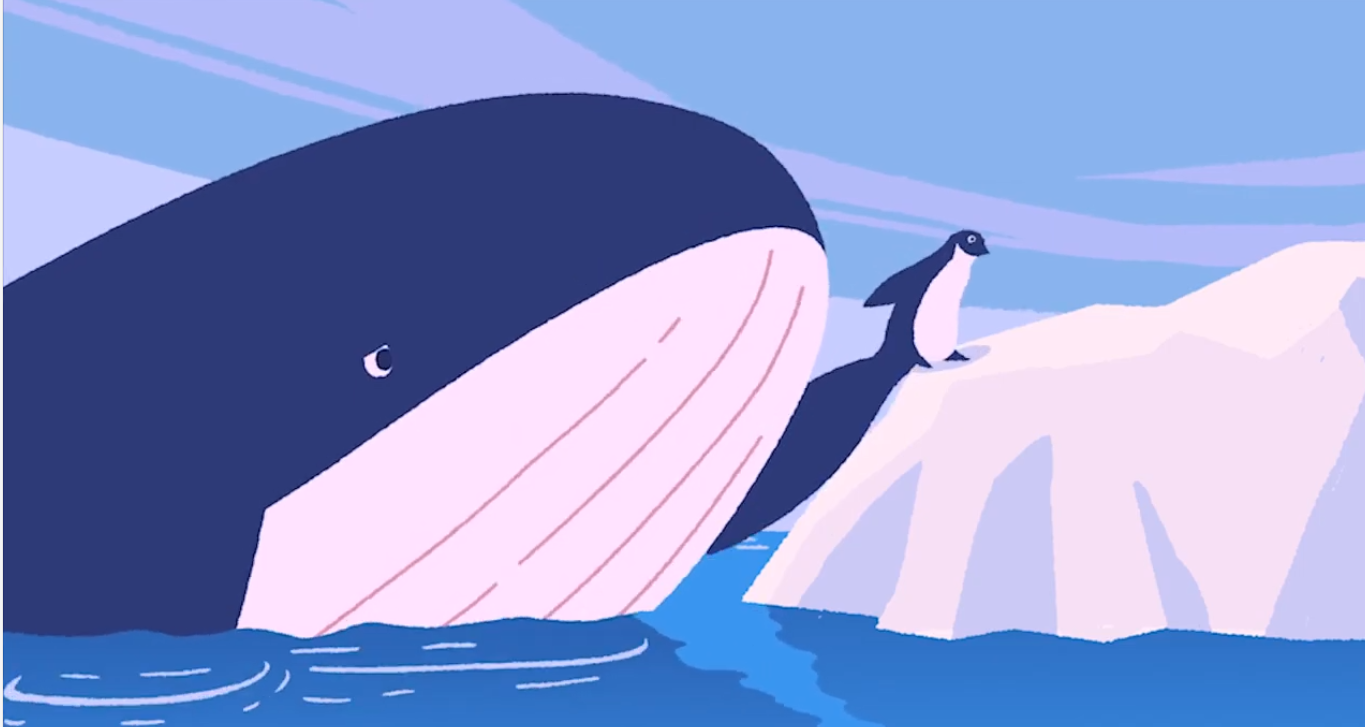
One can imagine a part of the world starting to disappear as it submerges into the rising ocean water gradually. There is rising tension, panic, hysteria, and anxiety among people across the globe. Unfortunately, people fail to see that the scenario described above is unfolding due to global warming and climate change. The United Nations (UN) adopted the seventeen Sustainable Development Goals (SDGs) in 2015 to rally global partnership actions against climate change (United Nations). In partnership with Tencent, the UN started a campaign to bring Chinese youth on board to engage in a dialogue about environmental issues. To persuade the young people, the UN and Tencent created the “The Penguins and The Whale” ad. The ad is a short video clip showing a delightful and mutual friendship between a whale and a penguin advancing to the last iceberg (United Nations). Although the penguins and the enjoyed the friendship, human activities such as the development of factories and transportation led to an increase in temperatures, which interrupted the association. The clip ends with a heartbreaking image of a stranded whale and penguin after all the icebergs melt, putting their lives in danger.
Notably, the ad’s target group is the Chinese youths whom the UN and Tencent wanted to persuade to join the Chinese Youth Dialogue campaign to discuss the UN sustainable goals. The creators chose the right media to create awareness by using a short video clip that can be shared easily on social media platforms. Therefore, the animation perfectly served the purpose by appealing to the target audience. The developers utilized rhetorical appeals, primarily ethos, pathos, and logos, to further convince the audience. Ethos plays a significant role in depicting the credibility of the UN and Tencent as global and reputable organizations. The use of logos where images of industrial emissions and automotive exhaust fumes lead to increase temperatures depicted by strong rays from the sun makes sense to youth who understand the causes of global warming. Pathos, the appeal to emotions, plays a role as the clip shows how people contribute to challenges facing innocent creatures and fellow humans. The UN and Tencent make a very persuasive campaign, which is the direct result of their use of ethos, logos, and pathos as the clip received millions of click-throughs on WeChat.
Admittedly, the advert received overwhelming reactions and responses from the viewers majorly because it is a creation of the UN and Tencent, which are reputable organizations. The UN is a global agency involved in various issues of universal concern. Currently, the organization is involved in steering the seventeen SDGs aimed at making the world a better place for all species. On the other hand, Tencent is a Chinese multinational company dealing with technology and internet-related services and products. The two agencies have the moral authority to influence the world on serious issues regarding the environment. Notably, the two organization intends to see the young people take center stage in the dialogue concerning global issues. That is why the advert focuses majorly on youths by requesting them to join the Chinese Youth Dialogue campaign to discuss the UN’s seventeen SDGs. Thus, the credibility of the ad creators promoted the positive reception and success of the campaign.
Additionally, the advert appeals to logic as the creator utilizes rational explanations to justify the effects of human activities on the environment and other species. The sequence of events shows how human inventions threaten the life of living things, especially aquatic life. For instance, within the first few seconds of the animation, the penguins and the whale are happily going about their businesses. However, once the ships, boats, and industries appear, too many gases and industrial effluent are released into the environment. Typically, the emissions from industries and automobiles using fossil fuels are greenhouse gases. Greenhouse gases absorb infrared radiations and heat that are bouncing off the earth’s surface, leading to an increase in global temperatures. As the temperatures rise, vaporization increases leading to heavy rainfall, and glaciers also melt, resulting in rising sea levels. The advert depicts these events sequentially and successfully persuades the views.
Lastly, the advert appeals to emotions since it captivates the attention of the viewer as the events turn from joy to sorrow. The end of the clip is heartbreaking as it portrays the penguin and the whale moving towards a remaining iceberg. Unfortunately, the iceberg is also vulnerable to increasing temperatures and gradually starts to melt until it completely disappears. The two animals are left stranded, not knowing what to do next but continue to wander around with the hope of locating another iceberg. In addition, the rising sea levels are slowly engulfing buildings meaning humans are not safe as well. These happenings are touching and make the viewers realize the seriousness and urgency of global warming and climate change.
Overall, the persuasive strategy of the UN and Tencent campaign is mostly successful because the images of the whale and penguin relationship appeal to viewers’ logic, character, and emotions. Human activities through innovations and developments interrupt the lives of innocent aquatic animals, an idea that is heartbreaking to the target audience. Essentially, human beings consciously or unconsciously engage in activities that risk the lives of other animals as well as people themselves. Hence, the animation paints a harrowing reality of how humans are the world’s leading enemies making the viewers question their actions and responsibilities. Thus, the UN and Tencent intelligently employed rhetorical appeals to achieve their fundamental objectives.
Work Cited
United Nations. “The Penguin and The Whale.” Tencent, Stink Studios, 2020, Web.